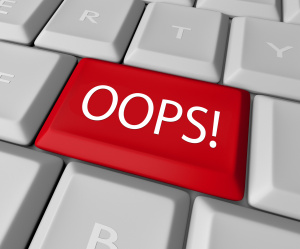Common Grammar Errors
By: Jen McKee
When I sat down to write this column, the idea was to list the “top five” grammar mistakes. So I started to make a list of what I felt were the “top five” mistakes that rub me the wrong way. As I got going though, I realized I was going to go way over my word limit. I also realized that what I think are the most offensive errors may not be what others feel are the worst. Bottom line is that I will have to break this up over a series of columns over time. Please remember there is nothing scientific about this report – what I describe is not any sort of official ranking of grammar offenses. I’m just trying to share some that I see commonly and how to avoid them.
The Apostrophe
In standard American English, the apostrophe most commonly indicates possession. We use an apostrophe before an ‘s’ to show singular possession (the teacher’s pet, the student’s notebook); or after the ‘s’ to show plural possession (the teachers’ students – if there is more than one teacher; the students’ tests – if there is more than one student). It is also used in contractions, to replace the letters that are left out (don’t for do not, you’re for you are, etc.). One of the more common apostrophe mistakes is using it before the ‘s’ in plurals that have nothing at all to do with possession. These four menu’s need reprinting; they all have coffee stain’s. The apostrophe use in this sentence is wrong both times. Regular plurals do not require apostrophes – menus and stains would be correct here. This menu’s pages have stains shows correct apostrophe use. Takeaway: do not use apostrophes in plurals unless you are trying to show possession. An exception (because we know the English language is full of exceptions) is its (possession)/it’s (the contraction). In this case, its is possessive without the apostrophe. With the apostrophe, it’s is the contraction for it is. Lots of fun, right?
That/Which
This is a big one.
The word which is often used where the word that should be used. While both are used to refer to things and not people, they are truly not interchangeable. That is used to introduce essential clauses and which introduces nonessential clauses. An essential clause is necessary for proper interpretation of a sentence; nonessential clauses generally further explain, but are not necessary for understanding. To determine whether a clause is essential or nonessential, look for commas surrounding the clause. Think of the commas as hooks that can be used to pull the clause right out of the sentence. The sentence should still make perfect sense after the clause is removed. A nonessential clause, which is surrounded by commas, can be removed without altering the meaning of the sentence. If the clause “which is surrounded by commas” is removed, the sentence would read A nonessential clause can be removed without altering the meaning of the sentence. Still makes sense. Alternatively, Clauses that are surrounded by commas are not vital to the meaning of the sentence. Without the “that” phrase, the sentence would read Clauses are not vital to the meaning of the sentence. See? This changes the meaning of the sentence (and makes it a potentially incorrect statement). Going back to high school (maybe even middle school) English, it often makes things simpler to “ditch the which.” Sentences can often be rewritten to make using the which clause unnecessary. A nonessential clause is surrounded by commas and can be removed without altering the meaning of the sentence OR A nonessential clause can be removed without altering the meaning of the sentence. I find the removal of which makes the whole thing a lot smoother.
I’ll tackle a few more common grammar troubles in the next PowerTips newsletter.



